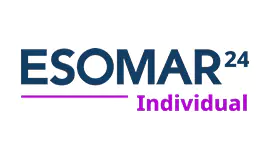Durable medical equipment (DME) are non-disposable equipment used in hospitals, clinics, and home care settings. Examples of DME are wheelchairs, walkers or hospital beds. DME used at home care settings are paid under Medicare part A and part B plans. Coverage for DME may include, wheelchairs, oxygen equipment, blood testing strips, crutches, and power mobility devices. This market has a strong reimbursement background which may expected to have some impact on the overall market. The patient’s medical practitioner must prescribe the specific durable medical equipment and it will need to be approved by Medicare before purchasing. Medicare is taking initiative to promote competitive bidding to bring its reimbursement in line with other payers, thus can negatively impacted some DME distributors and manufacturers. For instance, In December 2015, Centers for Medicare and Medicaid Services (CMS) issued a new rule establishing a prior authorization process for certain durable medical equipment, prosthetics, orthotics, and supplies (DMEPOS). In this rule, DMEPOS items that were flagged for unnecessary utilization comprise a master list of 135 items that will potentially be subject to prior authorization and relevant documentation must be submitted for prior authorization before beneficiaries can receive an item and submit a claim.
Durable Medical Equipment Market – Driver
Increasing number of hospitals, surgical and outpatient procedures, home healthcare services is expected to result in increasing adoption of DME during the forecast period. For instance, according to the U.S. Bureau of Labor Statistics, the home health aides and personal care aides are expected to increase by 13 million in 2020 (a 70% increase from 2010). In addition to this, the organization predicted that home healthcare employment is expected to grow at a rate of 55.0% from 2006 to 2016, thus accelerating growth of this market.
Rising number of patients that require long-term therapy, drug delivery, and related products is expected to propel growth of the durable medical equipment market. Increasing prevalence of chronic conditions such as cancer, cardiovascular disorders, neurological disorders, and gynecological disorders is leading to high demand for long-term care at home care settings and hospitals and this is expected to facilitate demand for durable medical equipment. For instance, according to the CDC, 2015, around 800,000 people in the U.S. died due to stroke and other cardiovascular diseases.
Furthermore, driven by the ageing demographic, there is a huge drive to develop equipment that can help to treat age-related conditions such as diabetes, cardiovascular disorders, and other lifestyle disorders as early as possible. Therefore rising geriatric population is important factor supporting growth of the DME market. For instance, according to United Nations Organization, there were an estimated 962 million people aged 60 years or over in the world in 2017, comprising 13% of the global population and this population is continuously growing at a rate of about 3% per year. Currently, Europe has the highest percentage of population aged 60 years or over (25%).
Durable Medical Equipment Market - Regional Analysis
The global durable medical equipment market is segmented into North America, Latin America, Europe, Asia Pacific, Middle East, and Africa. North America holds the largest market share in durable medical equipment market followed by Europe owing to large patient pool with various diseases and increase in surgeries which require more number of durable medical equipment. Asia Pacific is expected to exhibit high growth, owing to increasing investments by governments of emerging economies in the healthcare sector. Moreover, rise in preference for invasive as well as non-invasive monitoring devices is also expected to propel growth of the market.
Durable Medical Equipment Market – Competitive Landscape
The DME market is fragmented with presence of large to small scale players, and thus, the competition is high among players. Industry players with a comprehensive portfolio are most likely to successfully capture market share.
Key players in durable medical equipment market are Stryker Corporation, Baxter International, Inc. Medtronic plc. Becton, Dickinson and Company, Medline Industries, Inc., Invacare Corporation, Sunrise Medical (US) LLC, ResMed, Inc., Drive DeVilbiss Healthcare, Inc. (Medical Depot Inc.) Hill-Rom Holdings, Inc., and others. Key players are adopting inorganic growth strategies such as mergers and acquisitions to retain their position in the market. For instance, in 2017, Becton Dickinson completed the acquisition of C.R. Bard, Inc. and both companies are focusing on improving treatment of diseases for patients. Furthermore, in February 2017, Hill-Rom acquired Mortara Instrument, Inc., a Wisconsin-based medical device manufacturer, to increase their medical device product portfolio and revenue growth.
Durable Medical Equipment Market – Taxonomy
By Equipment Type
By End User
By Region
Share
Share
About Author
Komal Dighe is a Management Consultant with over 8 years of experience in market research and consulting. She excels in managing and delivering high-quality insights and solutions in Health-tech Consulting reports. Her expertise encompasses conducting both primary and secondary research, effectively addressing client requirements, and excelling in market estimation and forecast. Her comprehensive approach ensures that clients receive thorough and accurate analyses, enabling them to make informed decisions and capitalize on market opportunities.
Missing comfort of reading report in your local language? Find your preferred language :
Transform your Strategy with Exclusive Trending Reports :
Select a License Type

Credibility and Certifications

860519526

9001:2015
27001:2022


Joining thousands of companies around the world committed to making the Excellent Business Solutions.
View All Our Clients